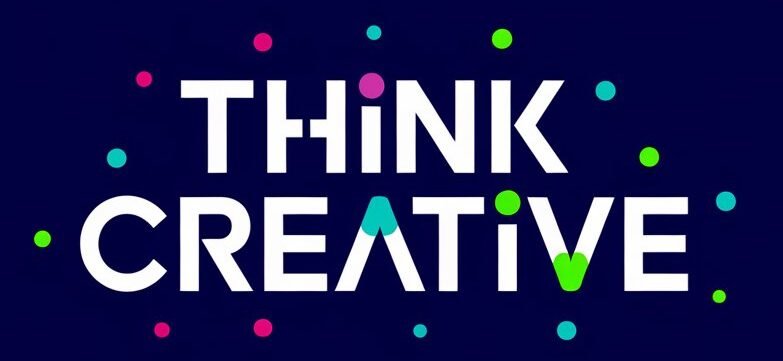When considering an Arabic tattoo, it's essential to understand the depth of meaning behind each symbol and phrase. These tattoos often reflect personal beliefs, cultural identity, and spiritual connections. However, misinterpretations can arise from a lack of context or inaccurate translations. Exploring the nuances of Arabic calligraphy and its significance can enrich your understanding, revealing layers of meaning that might surprise you. What stories do these intricate designs hold?
In a Nutshell
- Arabic tattoos often incorporate profound phrases like "حب" (love) and "سلام" (peace), representing deep personal beliefs and emotional connections.
- The use of Arabic calligraphy in tattoos reflects cultural history and aesthetic values, enhancing the artistic significance of the design.
- Spiritual symbols, such as the crescent moon and "Allah," signify personal faith and devotion, representing individual spiritual journeys.
- Misinterpretation of Arabic tattoos can lead to cultural insensitivity; understanding the historical context is essential for respectful representation.
- Choosing a reputable artist and verifying translations with native speakers ensures authenticity and respect for the cultural significance of the tattoo.
The Art of Arabic Calligraphy
While many see Arabic calligraphy as mere decoration, it's actually a profound art form steeped in cultural significance and history.
You'll find that the calligraphy techniques employed by artists vary widely, each style revealing layers of meaning and emotion. Historical influences, such as the rise of Islam and the cultural exchanges along trade routes, shaped the evolution of this art.
As you explore various scripts, from Diwani to Naskh, you'll notice how they reflect the values and aesthetics of their time. Each stroke tells a story, connecting you to the past and inviting you to appreciate the craftsmanship.
Understanding these elements fosters a deeper connection to Arabic culture, making you feel a sense of belonging within this rich artistic tradition.
Popular Arabic Words and Phrases for Tattoos
Understanding the beauty of Arabic calligraphy naturally leads to an interest in the popular words and phrases often chosen for tattoos. Many people seek meaningful expressions that resonate with their identity or life experiences.
Arabic phrases like "حب" (love), "سلام" (peace), and "قوة" (strength) capture deep sentiments, making them popular translations for those wanting to convey personal significance. Each word carries cultural weight and emotional depth, allowing you to connect with a rich heritage.
Moreover, selecting an Arabic phrase can create a sense of belonging, as it often reflects shared values and experiences. By choosing wisely, you can adorn your body with a tattoo that not only looks beautiful but also tells your unique story.
Spiritual and Religious Symbols in Arabic Tattoos
When exploring Arabic tattoos, you'll find that spiritual and religious symbols hold significant meaning for many individuals.
These tattoos often reflect deep personal beliefs and connections to faith. For instance, the crescent moon and star symbolize Islam, representing guidance and hope. The Arabic script for "Allah" or "Bismillah" carries profound spiritual significance, serving as a constant reminder of divine presence.
By choosing these symbols, you express a longing for belonging to your culture or faith, while also honoring traditions. Each design encapsulates a story, connecting you to a broader community that shares similar values and beliefs.
In this way, Arabic tattoos become more than body art; they embody personal journeys and spiritual paths intertwined with rich religious meanings.
Cultural Significance of Arabic Tattoos
Arabic tattoos carry profound cultural significance that transcends mere aesthetics, reflecting the rich history and identity of Arabic-speaking communities.
These tattoos serve as powerful tools for identity expression and pride in cultural heritage. When you see an Arabic tattoo, consider the following elements:
- Language and Script: Each character tells a story, expressing personal beliefs or values.
- Tradition: Tattoos often connect you to ancestral roots and practices.
- Community: They foster a sense of belonging, linking you to shared experiences.
- Resilience: Many designs symbolize strength and perseverance in the face of adversity.
The Beauty of Arabic Script Styles
The intricate beauty of Arabic script styles captivates many, drawing attention to the elegance embedded in its curves and dots. Each script variation—like Naskh, Thuluth, or Diwani—brings its own unique flair to tattoo aesthetics, reflecting cultural influences that span centuries.
When you choose an Arabic tattoo, you're not just selecting a design; you're embracing a rich tapestry of history and identity. The fluidity of the script can convey profound meanings, intertwining your personal narrative with the artistry of the language.
As you explore these styles, you'll find a connection that resonates deeply, fostering a sense of belonging to a broader cultural heritage. Arabic script tattoos become a bridge, linking your story to a timeless tradition that celebrates beauty and expression.
Choosing the Right Design for Your Tattoo
How do you find the perfect design for your tattoo? Start by reflecting on what resonates with you personally.
Consider these four sources of design inspiration that can carry personal significance:
- Cultural Symbols: Explore traditional motifs that connect to your heritage.
- Quotes or Poetry: Find phrases that inspire you and evoke deep emotions.
- Nature Elements: Think about elements like flowers, mountains, or animals that represent your journey.
- Personal Experiences: Recall moments that shaped your identity and seek designs that encapsulate them.
Personal Stories Behind Arabic Tattoos
When choosing a tattoo design, personal stories often play a significant role in shaping what you ultimately select.
Arabic tattoos resonate deeply with many, serving as meaningful expressions of identity, heritage, or pivotal life experiences. You might find yourself drawn to a particular phrase that encapsulates a cherished memory or a guiding principle.
These tattoos can forge personal connections to your past, family, or culture, allowing you to carry that narrative on your skin. Each symbol or script tells a story, creating a sense of belonging that transcends language barriers.
As you consider your choice, think about how this tattoo can reflect not just who you are, but also the journey that shaped you, making it uniquely yours.
Misconceptions About Arabic Tattoos
While many admire the elegance of Arabic script, misconceptions about its meanings and cultural significance often cloud perceptions.
People sometimes mistake Arabic tattoos for mere symbols of beauty, overlooking their profound roots. Here are four common misunderstandings:
- Misunderstood Meanings: Many assume a phrase is beautiful without understanding its true significance.
- Cultural Appropriation: Wearing Arabic tattoos without context can alienate the culture they represent.
- Superficial Trends: Some view these tattoos as trendy, ignoring their historical weight.
- Language Barriers: Non-Arabic speakers may misinterpret or misuse phrases, leading to awkward or offensive outcomes.
Recognizing these misconceptions fosters respect and deeper connections with the culture, inviting you to engage thoughtfully with this art form.
The Role of Arabic Tattoos in Modern Culture
Arabic tattoos have carved out a unique space in modern culture, reflecting a blend of personal expression and cultural homage.
You'll notice Arabic tattoo trends flourishing among diverse communities, where individuals often seek deeper meanings tied to identity and spirituality.
Yet, this popularity isn't without its challenges. Cultural appropriation debates frequently arise, questioning whether it's respectful or exploitative to adopt symbols from a culture not one's own.
Engaging with these tattoos requires a nuanced understanding of their significance, urging you to contemplate the stories and histories behind the ink.
Tips for Getting an Arabic Tattoo Safely and Respectfully
Before you commit to an Arabic tattoo, it's essential to approach the process with respect and awareness of the cultural context it represents. Here are some tips to guarantee you honor the tradition:
- Research the Meaning: Understand the words or symbols you want; misinterpretation can lead to embarrassment.
- Seek Authenticity: Work with a reputable artist familiar with Arabic script and culture.
- Design Consultation: Discuss your ideas with your artist to guarantee they align with cultural significance and aesthetic appeal.
- Consider Tattoo Placement: Choose a spot that reflects the meaning and significance of the tattoo, while also respecting cultural norms.
Frequently Asked Questions
Can I Use Arabic Script for Non-Arabic Words?
Absolutely, you can use Arabic script for non-Arabic words in your tattoo design. This creative choice can symbolize your unique identity, allowing you to connect culturally while expressing personal meaning in an aesthetically pleasing way.
What Are Common Mistakes in Arabic Tattoos?
When getting an Arabic tattoo, you might encounter common misinterpretations and incorrect translations. It's essential to research thoroughly, ensuring the meaning resonates with your identity, avoiding symbols that could misrepresent your intended message.
How Do I Find a Skilled Arabic Tattoo Artist?
To find a skilled tattoo artist, start by researching local artists and their portfolios. Look for reviews and recommendations; connect with communities that share your interests. This guarantees you choose someone who understands your vision.
Are Arabic Tattoos Considered Cultural Appropriation?
You're right to contemplate cultural sensitivity in your choice of tattoo. While artistic expression is essential, understanding the origins and significance of symbols can deepen your connection and respect, fostering a more meaningful experience.
What Are the Best Placements for Arabic Tattoos?
When considering placements for tattoos, wrist tattoos offer visibility and intimacy, while back tattoos provide a larger canvas for intricate designs. Each choice reflects personal meaning, inviting connection and expression within your unique story.




